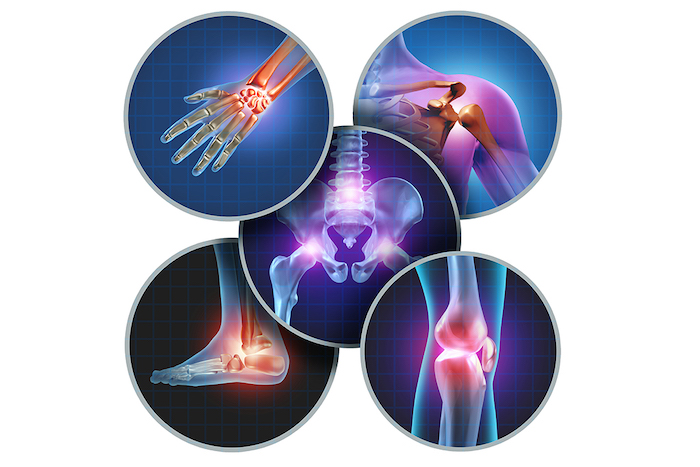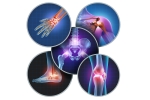
Chronic pain does more than just cause physical problems. The underlying effects it can have on the psychology of sufferers can be hugely detrimental to their health and wellbeing. Let’s explore the psychology of pain and the importance of understanding it.
When people hear the term ‘chronic pain’, they tend to directly relate it to purely physical problems, whether it’s back pain, arthritis, or any other number of issues that are experienced frequently, by people all over the world.
Chronic pain can be caused by various things, whether it's primary (like migraines and other neuropathic disorders) or secondary (meaning the pain stems from other initial issues, like a sports injury or an illness). But if you’re a chronic pain sufferer, you are very likely aware by now that pain isn’t just a physical feeling. There’s in-depth psychology to it, and having a better understanding of this psychology can often help with treating it.
Pain is considered chronic if it doesn’t go away after three months, despite attempts at treatment. And if this occurs, usually the first step is to the doctor or physician for a check-up to see what’s going on. This is because the sensation of pain is sometimes believed to be purely physical, and in the past, that was the general consensus of the medical world.
However, through research and study, it’s now realized that pain is in fact not only physical, but biological, psychological, and emotional as well. And as anyone who suffers from chronic pain can attest to, feeling perpetual pain can result in feelings of hopelessness, anger, sadness, and anxiety. In an article published on Open Access Text, it’s reported that chronic pain patients are at an increased risk of depressive behaviors, suicidal ideation, and risk of suicide. In fact, in a survey of 1,512 chronic pain patients, 32% of respondents reported they have some form of suicidal ideation.
These numbers show that thinking pain is purely physical is not only incorrect but potentially life-threatening as well. Unfortunately, in the past, psychological factors weren’t usually taken into consideration when treating or diagnosing chronic pain. Luckily for chronic pain sufferers, its importance has been realized and is now a key factor when treating pain.
So, how can an understanding of the psychology behind pain help assist its sufferers in better treating their issues? And what exactly is the psychology behind the pain?
To understand this, first and foremost we need to understand what pain is, and where it actually comes from. Essentially, pain acts as an in-built alarm system for our bodies. When we feel pain, it signals to us that there’s something wrong, and something that needs to be addressed. So, for example, if we are going for a run and we twist our ankle, danger messages shoot up to the brain and pain can emerge, stopping us from running and therefore, helping to prevent further damage.
How does this message occur? Well, the second we experience a certain painful activity (such as touching a hot stove), the resulting tissue damage activates nociceptors (receptors that register pain), which then send an electric signal up the connected nerve fiber. From there, the signal travels to the spinal cord, then up to the brain, where it is received by various areas of the brain. The somatosensory cortex (the area which makes you pull your hand away from the stove), the frontal cortex (the area which starts to analyze what happened to cause that sensation), and the limbic system (the area that makes you say, “Ouch!” and start feeling emotions related to that pain).
What makes pain particularly interesting is that every time we experience something that hurts, like a stubbed toe or a banged elbow, our brain perceives it in a different way each time depending on the state of our mental wellbeing when it occurs. For example, if you kick your foot against a table while you’re in a good mood, you might notice it hurts – but not too badly. Whereas if you kick your foot while you’re feeling low, or are in a bad mood, you may experience a sharper, more intense feeling of pain. This can be explained by the ‘gate control theory, which was created by pain researchers Ronald Melzack and Patrick Wall back in the 1960s.
The theory posits that there is a bundle of nerves in the spinal cord that acts as a ‘gate’, and when it receives messages of pain from anywhere in the body it allows some, all, or none of those messages through. How ‘open’ or ‘closed’ these gates are, dictates how much pain you’ll experience.
There are several things that are believed to ‘open’ the gate, such as injury, narcotic use, and little to no physical activity, and several things that are believed to ‘close’ the gate, such as meditation, pain medication, relaxation, and exercise. What’s more, emotional and cognitive factors can influence whether the gate is open or closed as well.
Emotionally, if the gate is open, it’s likely that the person was experiencing feelings such as depression, anger, anxiety, stress, and hopelessness when they hurt themselves, and if the gate is closed, they’re likely to have been feeling more positive emotions at the time. Cognitively, if the gate is closed it’s due to things like more effective coping thoughts and mechanisms, as well as distractions from the pain. And if the gate is open it’s due to things like focusing on the pain intensely and allowing thoughts to get carried away with worries and fears about the pain.
Understanding how pain works is essential in knowing how to best treat it. And with such a wide array of advice already available for those suffering from chronic pain, there are certain things you can do that help with the psychological downsides as well. These include:
- Maintaining a healthy social network of family and/or friends
- Staying as active as your pain will allow
- Listening to your body, to recognize when any physical limitations are being met
- Distracting yourself from the pain by taking up a hobby
- Meditating and practicing mindfulness in order to stay as present as possible, not allowing the pain to overtake your thoughts
Neglecting to fully appreciate the benefits of taking a psychological approach and a somatic approach to chronic pain can cause extensive issues to sufferers, prolonging the pain and decreasing their quality of life.
To effectively treat chronic pain from all aspects, it’s best to see a psychologist as well as a physician. Receiving some sort of counseling or talk therapy can assist in giving people the tools needed to better cope with their individual experiences of chronic pain.
Precision Pain Care and Rehabilitation has four convenient locations in Richmond Hill – Queens and New Hyde Park, Lindenhurst, and Valley Stream – Long Island. Call the Queens office at (718) 215-1888, or (516) 419-4480 for the Long Island offices, to arrange an appointment with our Interventional Pain Management Specialist, Dr. Jeffrey Chacko.













